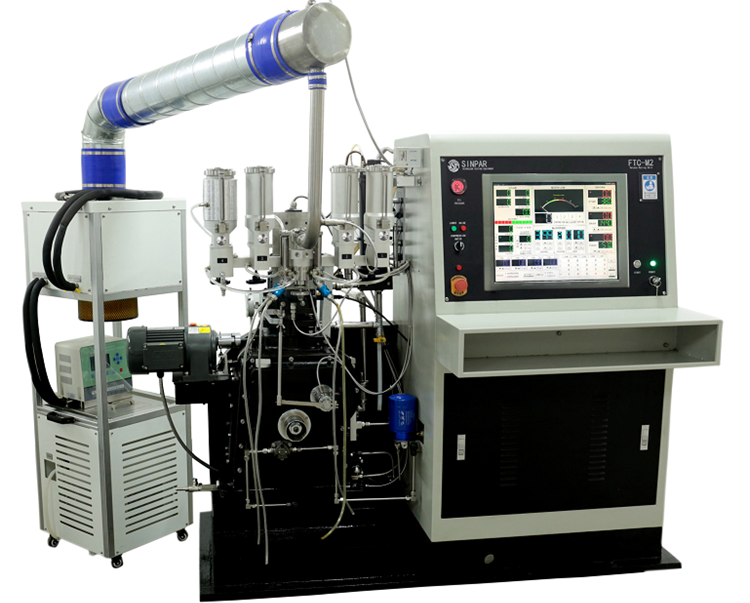Octane Test Engine is used according to ASTM D2699 and ASTM D2700 to determine the octane number of spark-ignition engine fuels. The operating conditions to compare its knock characteristic with those of PRF blends of known octane number. Compression ratio and fuel-air ratio are adjusted to produce standard knock intensity for the sample fuel. The sample is measured by a detonation measurement system of octane test engine.
The octane test engine is calibrated to operate at standard knock intensity in accordance with the guide table. The fuel-air ratio of the sample fuel is adjusted to maximize the knock reading value. And then the cylinder height is adjusted so that standard knock intensity is achieved. Without changing cylinder height, two PRF blends are selected at their fuel-air ratio for maximum knock reading. One knocks harder and the other softer than the sample fuel. A second set of knock intensity measurements for sample fuel and PRF blends is required. Then the sample fuel octane number is calculated by interpolation in proportion to the differences in average knock readings.
A final condition requires that the cylinder height used shall be within prescribed limits around the guide table value for the calculated octane number. Bracketing procedure ratings may be determined using either the Equilibrium Fuel Level or Dynamic Fuel Level approach. (More details see Octane Test Engine with SXCP control panel).
A calibration is performed to establish standard knock intensity using the cylinder height specified by the guide table for the octane number of the selected PRF. The fuel-air ratio of the sample fuel is adjusted to maximize the knock intensity under equilibrium conditions; the cylinder height is adjusted so that standard knock intensity is achieved. The calibration is reconfirmed and the sample fuel rating is repeated to establish the proper conditions a second time. The average cylinder height reading for the sample fuel, compensated for barometric pressure, is converted directly to octane number, using the guide table.
A final condition for the rating requires that the sample fuel octane number be within prescribed limits around that of the octane number of the single PRF blend used to calibrate the octane test engine to the guide table standard knock intensity condition.
